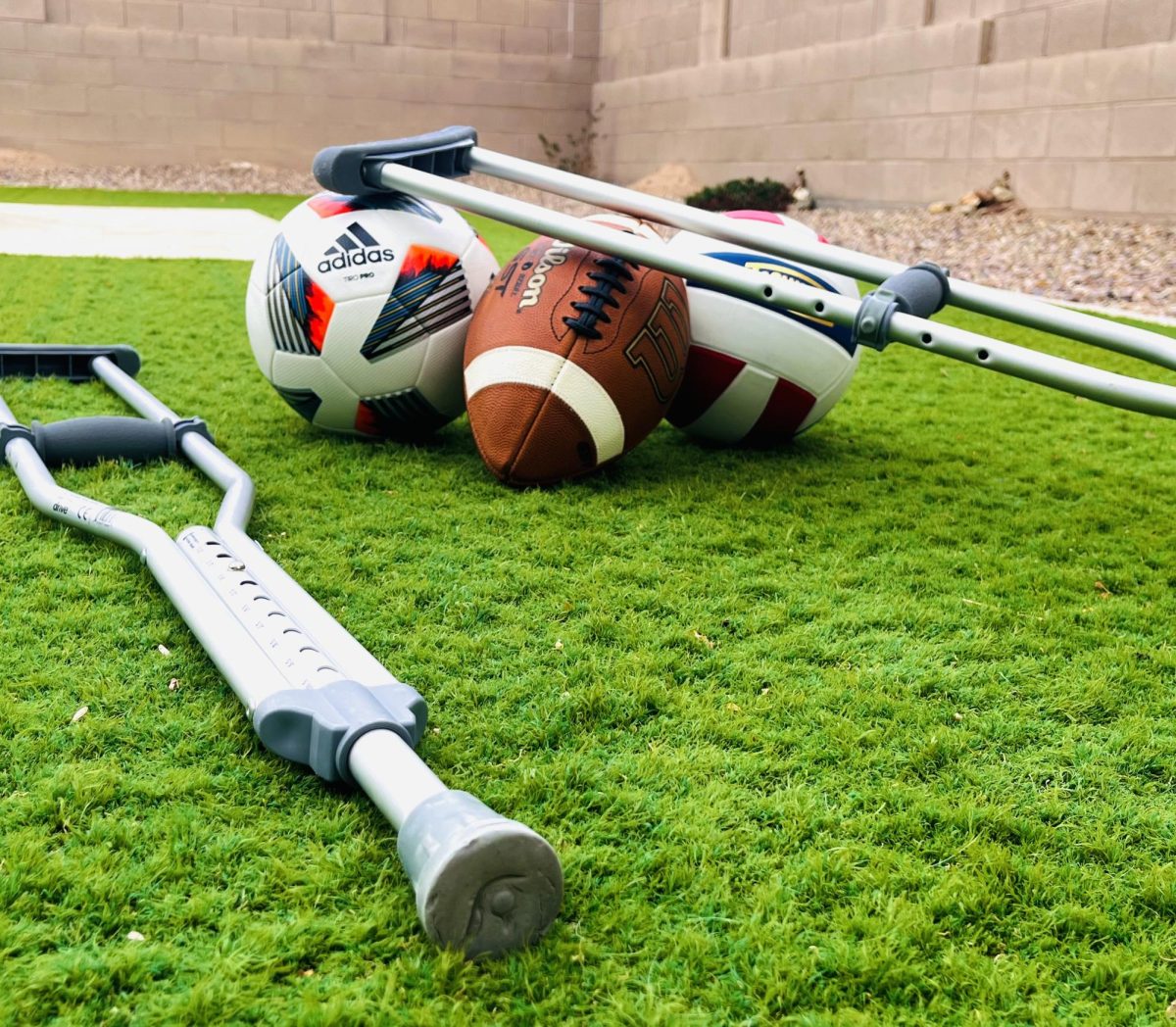Various aspects of being a student athlete can be rigorous and demanding. On top of the constant balance of school and sports, injuries also tend to plague these student athletes, especially during their high school years.
Athletic injuries in high school can range from a sprained ankle to needing surgery. Nonetheless, no matter how big or small, these injuries can affect and impact students’ lives.
“I fractured my femur and then completely tore my ACL, partially tore my MCL, tore both sides of the meniscus, and bruised my patella tendon,” said Abigail Weisberg, sophomore.
In some instances, an injury can push the athlete to work even harder and prove to themselves just how much they love their sport.
“Mentally, it made me stronger just because I kind of spun it in a positive way, and instead of just quitting volleyball and being down about it, I just recognized that this is an obstacle that I can get over and so I just pushed through and got cleared two months early,” Weisberg said.
On the other hand, it can be really hard for student athletes to cope with the stress of returning to their sport. The fear of getting reinjured can limit them from rebounding to their full potential.
“I tore my patella tendon, I dislocated my knee, and it just ripped and tore,” said Jaden Maxey, sophomore. “It impacted me mentally because it kind of scared me that it might happen again. I’m getting back into the game, and kind of taking things slow.”
While it is important for athletes to stay involved in their sport even after getting injured, it can be mentally draining. No matter how bad they want to get back on the court or field, with an injury, they can’t.
“I went to every single one of my club team’s games. It’s just kind of hard to watch everyone because when you’re on a team, especially a club team, you’re a family,” Weisberg said. “So, it’s just kind of hard watching everyone win and me just kind of sitting there.”
The numerous doctor appointments can also take students out of school when dealing with an injury. However, some choose to prioritize school as a thing they can control during a time of uncertainty.
“I did miss a lot of school because I had to go to a lot of meetings about my knee and a bunch of doctor appointments,” Maxey said. “But I still wanted to keep my grades up, and that was a big thing, so I kind of balanced that.”
There are multiple factors that can increase the risks of an injury, and in high school these factors tend to develop from two main situations: either an unfortunate accident or from pushing themselves too hard within their sport.
“The [injuries] are either some type of weird contact or position that happens in their sport that they can’t really fully control, or on the flip side we see a lot of overuse,” said Akayla Dolezal, advanced sports medicine teacher.
While certain instances and aspects of injuries are out of the players control, other factors like proper preparation and muscle strengthening can create a level of tolerability that increases injury prevention.
“Other things that are more avoidable which we could probably do a better job of… could be strengthening and conditioning the joints, ligaments, and tendons that are required for that sport,” said Dan Maggio, physical therapist and sports strength coach.
Sleep and nutrition can also be a big component within causes for injuries. Without doing the basics first, it can be hard to progress without getting held back.
“I like to think about big rocks, then small rocks, then pebbles. Big rocks might be making sure you’re getting around seven to maybe eight hours of sleep. And then we think about eating, so prioritizing protein and then some kind of carbohydrates,” Maggio said.
In high school, where everything seems like a race, it can be hard for athletes to take a step back and work on some of the basics, but agility and mobility can keep the body healthy.
“I think knowing the demands of their sport, and kind of making sure they’re strong enough and they work on their form is really important,” Dolezal said.
Another major step in injury prevention revolves around recovery time and allowing the body to rest when it needs to rest. Student athletes have multiple interests to prioritize, and often struggle to find time to listen to their body.
“You’re in school, like a full time job. Then you have homework on top of that. Then you have sports practice on top of that. So there is a lot of things that you’re asking your body to do, and not just that but also recover from,” Maggio said.
Returning from an injury is important to an athlete in both mental and physical ways. Proving to themselves that they can get over their obstacles is essential.
“No one should ever let an injury determine when they stop playing. Come back from that injury and play and then decide, ‘ok this sport is not for me, but the injury wasn’t the thing that took me out of playing,’” Maggio said.



